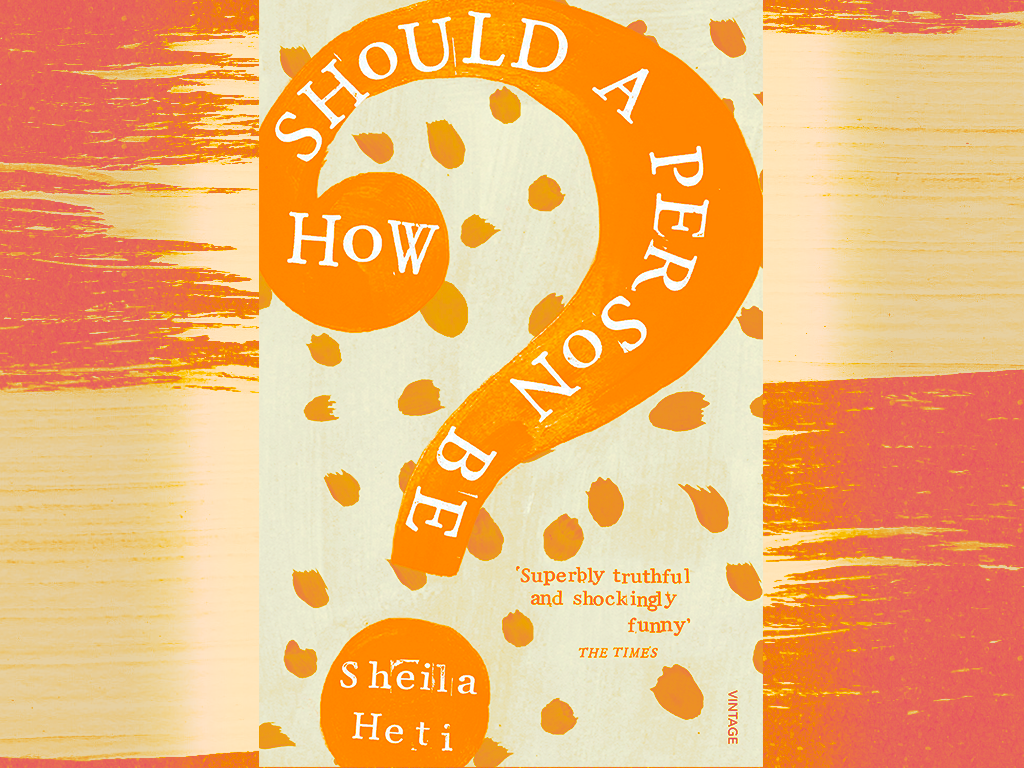How should a person be?
That’s the question Sheila Heti asks in the title of her novel/memoir.
It’s the question she — or the main character also named Sheila— asks of everyone she meets for a few years of her life.
It’s the central question of the story.
It doesn’t get answered in a direct way. Heti doesn’t give advice to the reader the way someone at a party might. Over drinks, with music in the background, an acquaintance might say: “How should a person be? Honest, fun, true to themselves. A good friend.” Heti doesn’t explicitly say any of those things.
She does, however, show us how Sheila lives during the period that she’s exploring this question, and what she ultimately decides to focus her time and energy on.
“Heti doesn’t give advice to the reader the way someone at a party might.”
One place she shines her attention is her friends, fellow artists living in Toronto, and particularly on her best friend, Margaux.
They meet for brunch. They have parties. They talk about art. They make art together. They challenge each other. They do a lot of drugs. They fight. And make up.
Having a close community is new for Sheila, and something that she both revels in, and that takes some getting used to. She talks about how “before I was twenty five, I never had any friends, but the friends I have now interest me nonstop” (3), and how the sight of Margaux’s legs through the tiny windows of her crappy basement apartment never fails to delight her (38).
“Before I was twenty five, I never had any friends, but the friends I have now interest me nonstop.”
But like any close pair, they need to figure out and sustain boundaries. This question first comes up when they’re on a trip to Miami and Sheila buys the same dress as Margaux. Margaux doesn’t say anything in the moment, but then stews over it, realizing she will never wear the dress. She gives it away and writes Sheila an email: “I should have been clearer in the store about how it made me uncomfortable… I really do need some of my own identity” (116).
Sheila gets caught up in a light, lusty relationship with a guy for a few weeks, allowing her to avoid Margaux and the discussion of the dress. When Margaux finally confronts her, Sheila says, “I thought you would never want to see me again!”
“I should have been clearer in the store about how it made me uncomfortable.”
Margaux replies: “Just because I was upset doesn’t mean it’s all over!” Heti explains that she couldn’t say anything more to Margaux because she would’ve burst into tears, as she always does during fraught conversations: “It was too scary; a threat I had felt since childhood that at any moment a relationship might disappear without a poof because of something little I had done or said” (133).
This was one of those rare, magical moments when a book expresses something I’ve felt, but haven’t even articulated to myself yet. Like Sheila, I often get a bit panicky in the middle stages of creating a close friendship, when I’ve decided I really like someone but things aren’t quite solidified. It feels, at those moments, like I’ve put so much time and love into building a skyscraper, but haven’t yet made it earthquake-proof. Of course I fear every tremble of the ground, even if most of them are just from trucks driving by.
“It feels, at those moments, like I’ve put so much time and love into building a skyscraper, but haven’t yet made it earthquake-proof.”
But, Sheila seems to argue, maybe with particular people, the panic isn’t necessary:
“I felt like we were together after the Fall, expelled from a perfect garden. I always imaged a golden age — a time before the Fall, between me and every other person — before they knew my ugliness. Then I felt irrevocably uneasy once it had been revealed, when there could be no more appealing to their total trust and admiration, to that early, easy innocence.
But with Margaux sitting in my living room, a shiver of hope danced in my heart that she might forgive me for buying the dress. Why else had she come? (133)”
That’s not to say Sheila cures herself of her neuroses that quickly — or at all. She runs away again the next time she and Margaux fight—this time about something more substantial than an outfit. But she comes back in the end. And in doing so, she shows the reader, how to come back, too — how to be a good friend, even when it’s scary.
Christine Junge is a writer living in the Bay Area. She still remembers singing “Make New Friends” with the girl scouts in an elementary school cafeteria on Long Island many, many years ago. You can follow her Instagram at JungeAtHeart.



Hi Christine, this is a very helpful analysis, thank you!
I’ve decided to write my BA thesis about this book, as a part of New Sincerity and/or Hipster Literature, i was told this topic is a bit too original for BA thesis but can be well combined with self-help literature. I would like to ask you therefore, if you have any advice for me? like readings, literature etc. or maybe an opinion on that. 🙂 Thanks a lot in advance,
Nadka